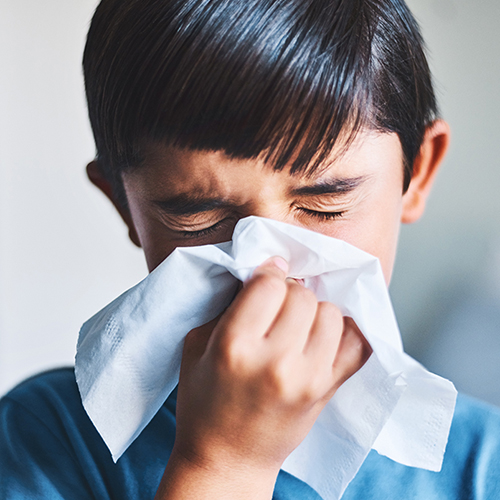December 2024
Once again, it’s that time of year when colds, sore throats, coughs, fevers, and other types of yuck make their rounds. But it can be hard to tell when it’s just a garden-variety virus that will clear up on its own in a few days and when it’s something more serious, such as the flu, COVID-19, or strep throat.
Fortunately, there’s treatment available for the more serious illnesses. The trick is knowing which one you have — and getting treated quickly.
Without prompt treatment, flu and COVID-19 can turn problematic, especially for higher-risk people. And strep throat is a potential problem for everyone. Untreated strep can spread to the sinuses, ears, or tonsils. Worse, it can lead to rheumatic fever (which can damage the heart and potentially cause rheumatic heart disease) or a rare but serious kidney disease called post-streptococcal glomerulonephritis (PSGN).
Here’s how to recognize symptoms of the flu, COVID-19, and strep throat so you can get tested and seek treatment.
Symptoms of Common Upper Respiratory Illnesses
If you’re starting to feel sick, you may be wondering if you’re sick enough to pursue treatment. That’s why it’s helpful to know the symptoms of common respiratory illnesses.
Flu symptoms
According to the CDC, flu symptoms include:
- Fever and/or chills
- Sore throat
- Cough
- Runny nose and/or congestion
- Muscle or body aches
- Fatigue
- Headache
It is worth noting that not everyone with the flu will have a fever. And some people may experience vomiting or diarrhea, although these symptoms are more likely in children than adults.
COVID-19 symptoms
According to the CDC, symptoms of COVID-19 can vary depending on which variant you contract and your vaccination status. Symptoms include:
- Any of the common symptoms of the flu (listed above)
- Difficulty breathing and/or shortness of breath
- Vomiting
- Nausea
Strep throat symptoms
Symptoms of strep throat include:
- Sore throat
- Pain when swallowing
- Fever
- Swollen lymph nodes in your neck
- Tiny red spots on the roof of the mouth
- Red and swollen tonsils
Getting Tested
Fortunately, there are simple tests available to see if you’re infected with the viruses that cause the flu or COVID-19 or the bacterium that causes strep throat.
You can purchase over-the-counter tests for the flu, COVID-19, and strep at your local pharmacy. You can often also get tested in-person there.
If you are having trouble accessing testing, contact your primary care provider.
Getting Treated
The advantage of getting tested at your local pharmacy is that your pharmacist can sometimes offer treatment on the spot. If you tested positive at home and want to see if treatment is right for you, contact your local pharmacist to see if they offer treatment. You can also contact your primary care provider.
If you’re feeling too sick to leave the house — or you’re worried about spreading your illness — ask your doctor if you can do a telehealth visit. If they prescribe a treatment to you, ask your local pharmacy if they can deliver the prescription to your home. The following treatments are available:
Flu: Antiviral drugs, including oseltamivir phosphate, zanamivir, peramivir, and baloxavir marboxil. Antiviral drugs for the flu work best when started within two days of the onset of symptoms.
COVID-19: Antiviral drugs, including nirmatrelvir with ritonavir, remdesivir, and molnupiravir. These drugs work best when started as soon as possible. According to the CDC, remdesivir must be started within seven days of the onset of symptoms, while t target=”_blank” rel=”noopener”he others must be started within five days.
Strep throat: Anyone who tests positive for strep throat needs antibiotics to clear the infection. The antibiotics of choice for strep throat are penicillin or amoxicillin, although the CDC notes that alternative antibiotics are available for those with a penicillin allergy.
Your healthcare provider may also give you one or more prescriptions to help you manage your symptoms while you are sick.



